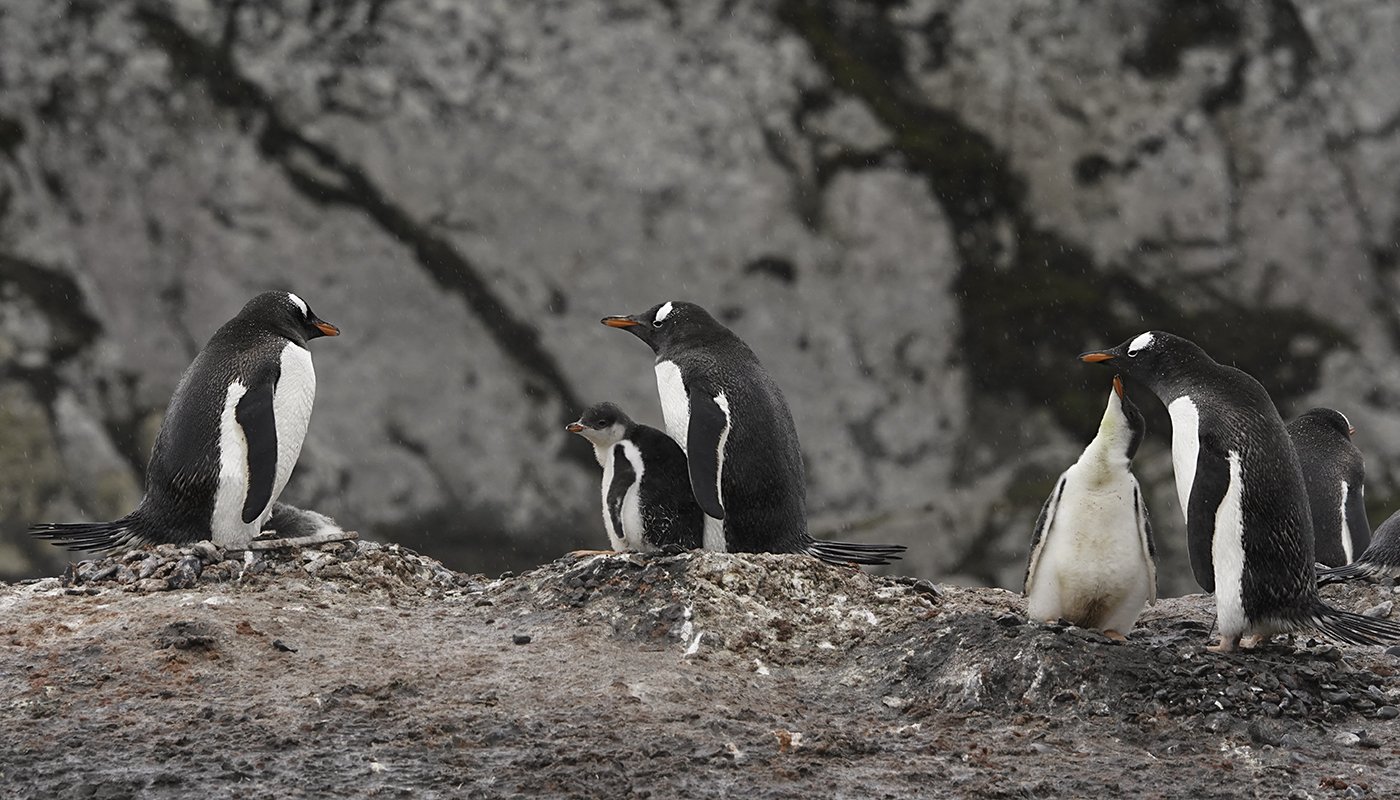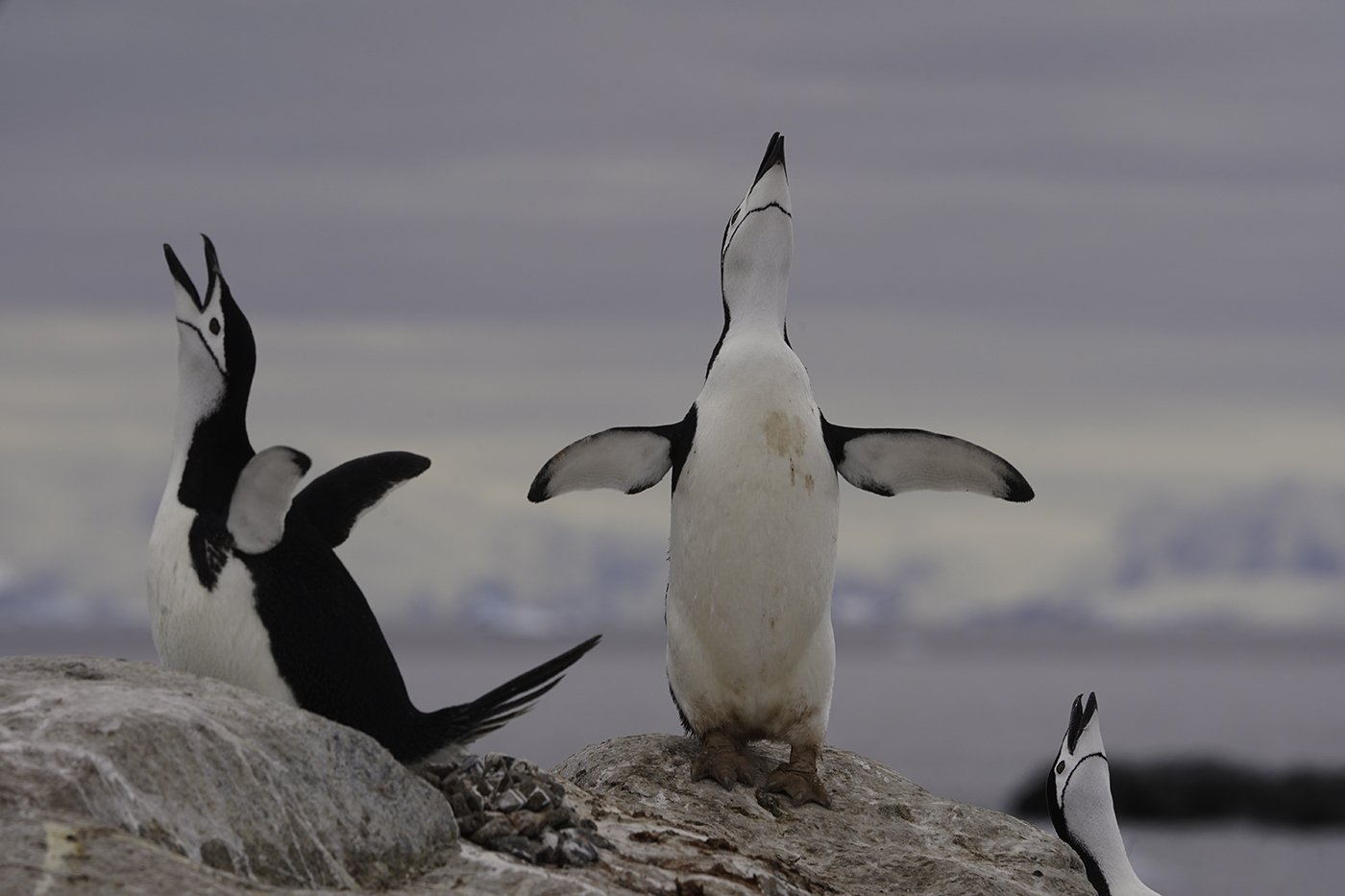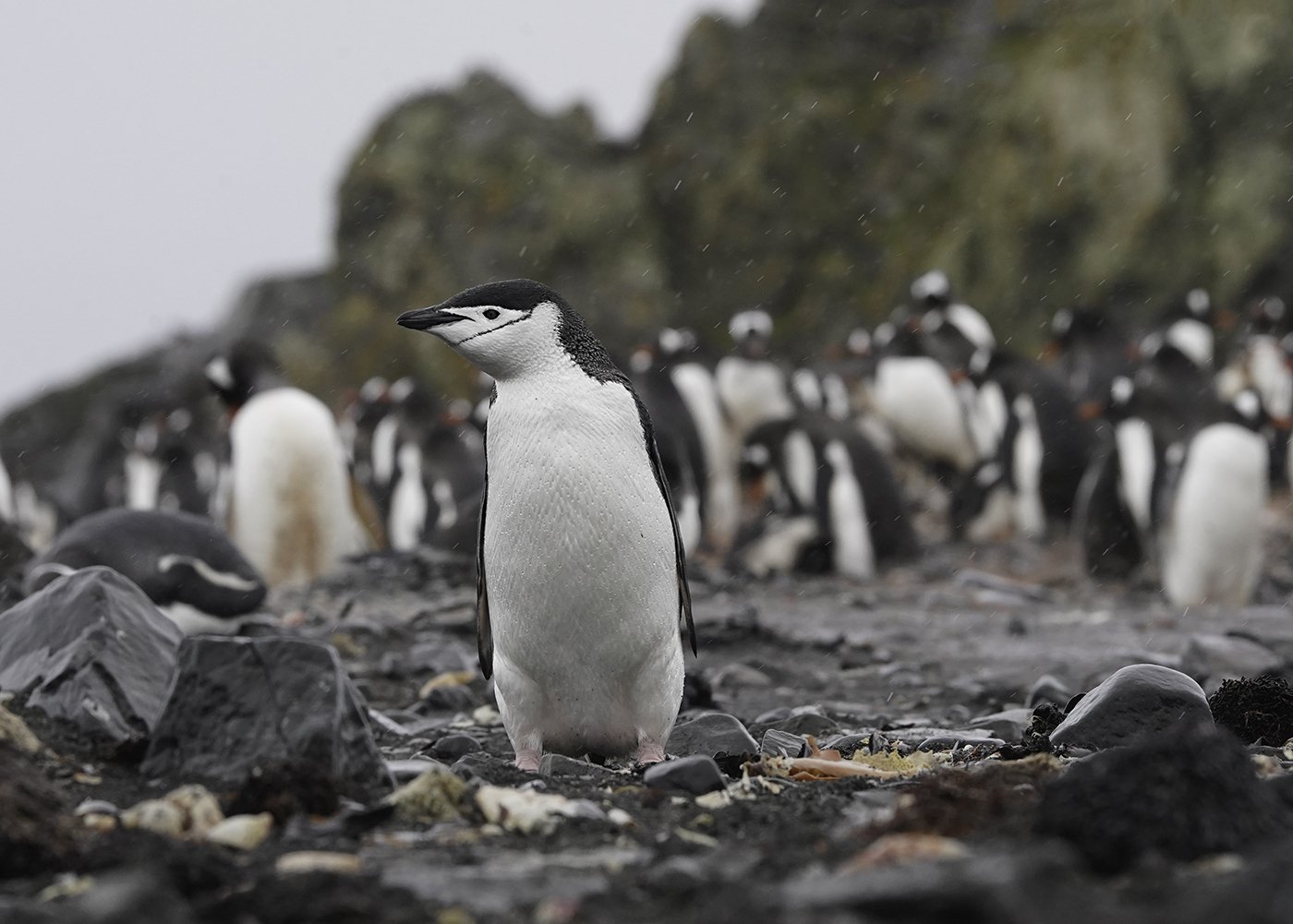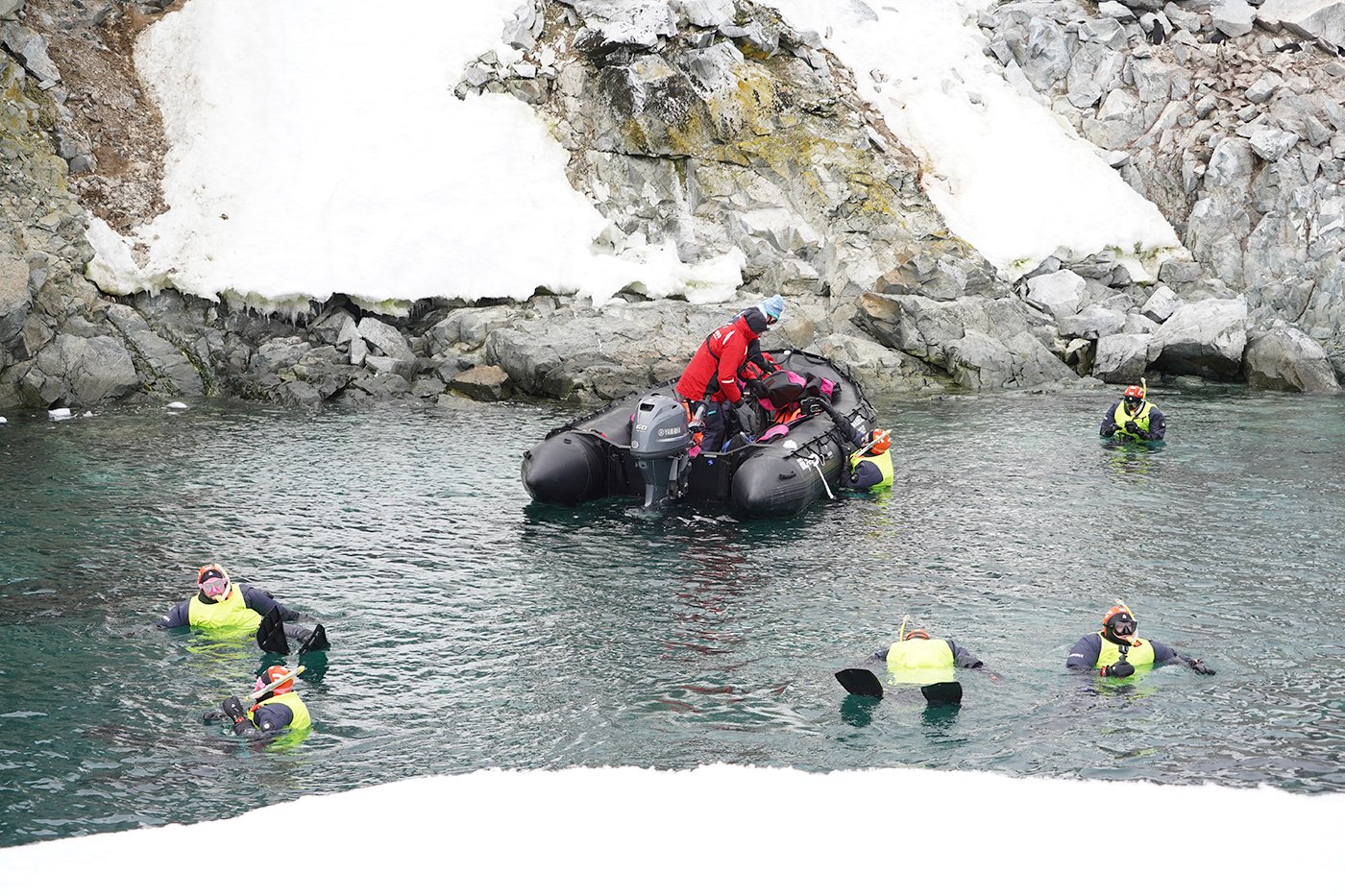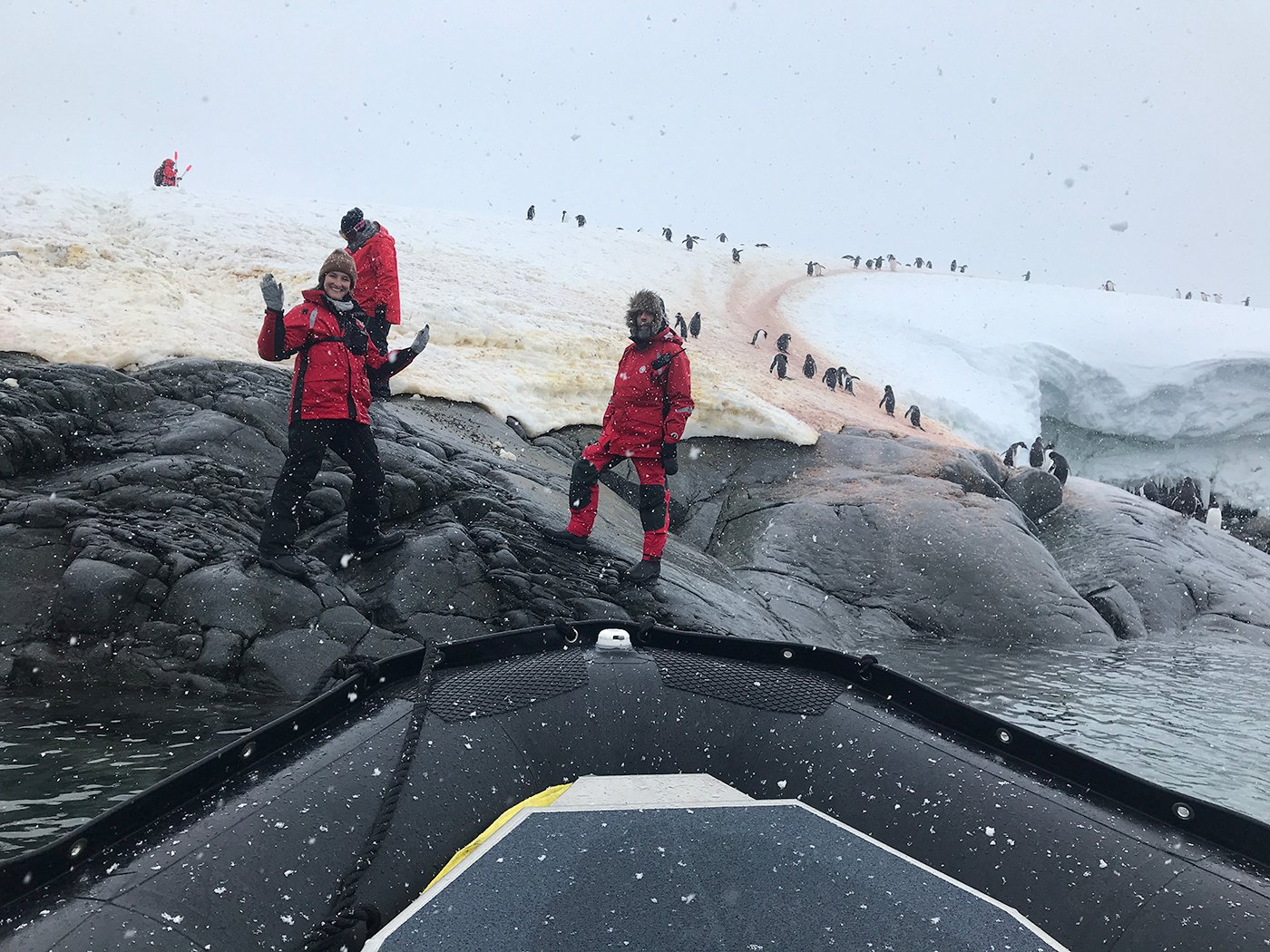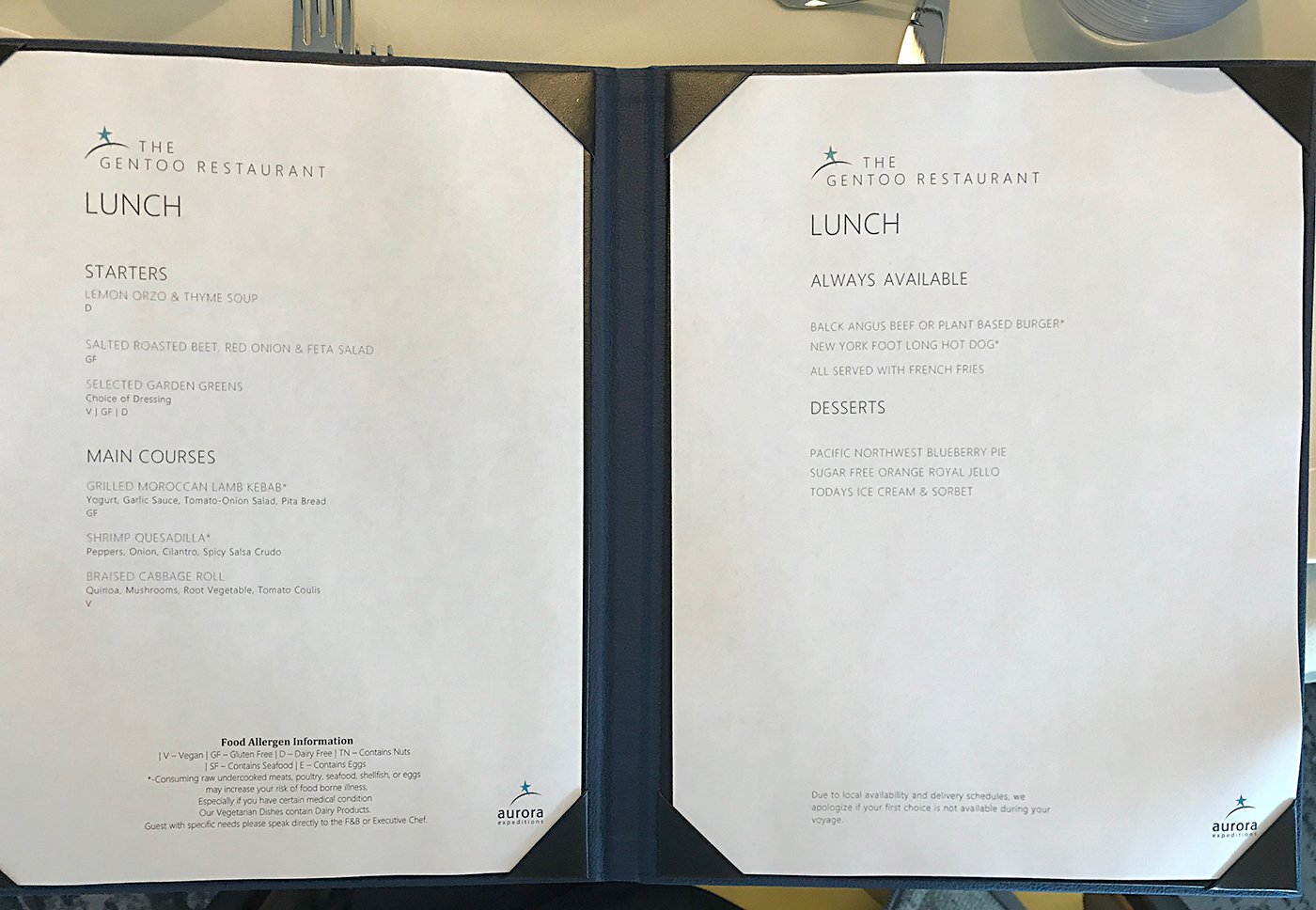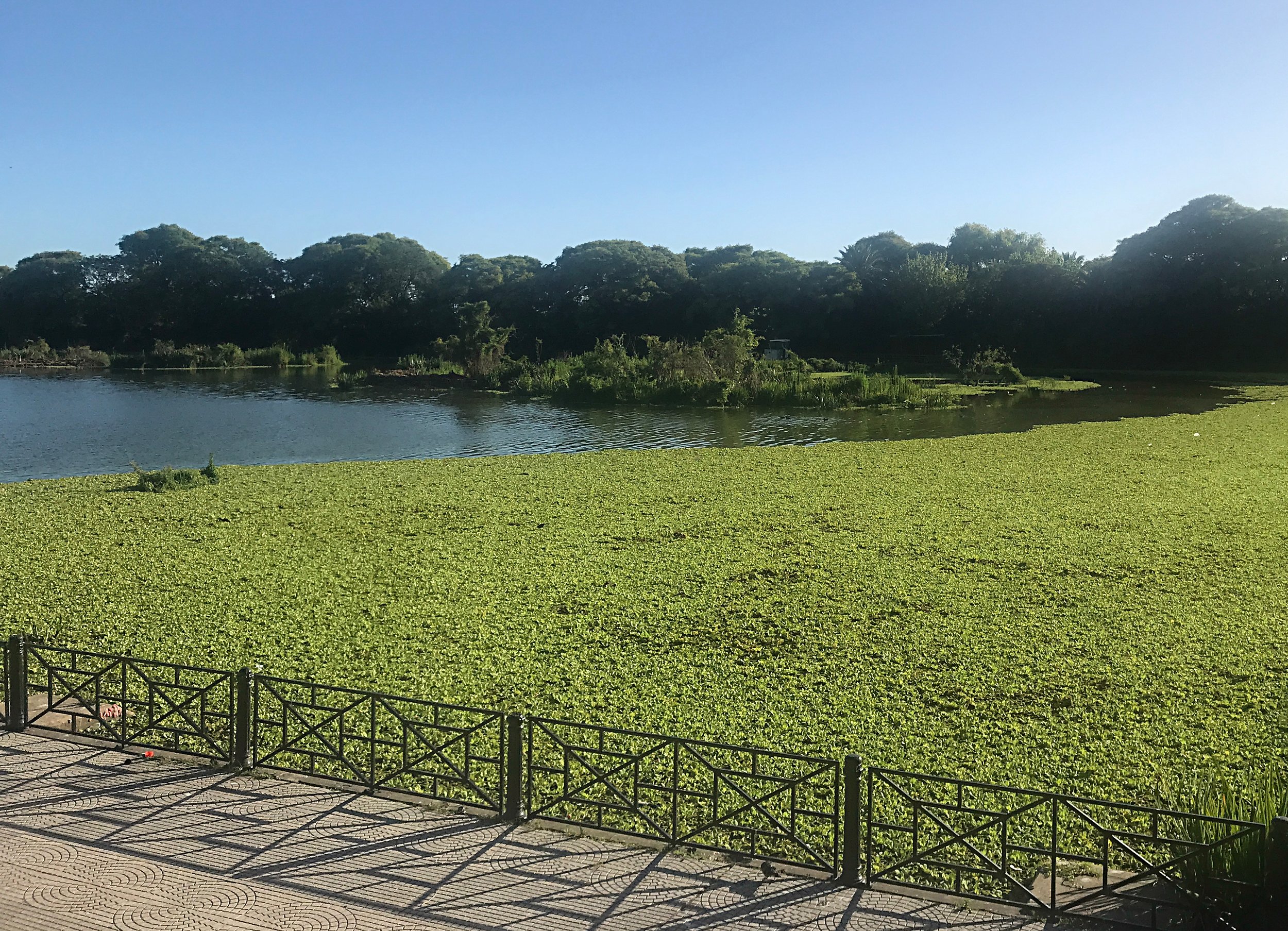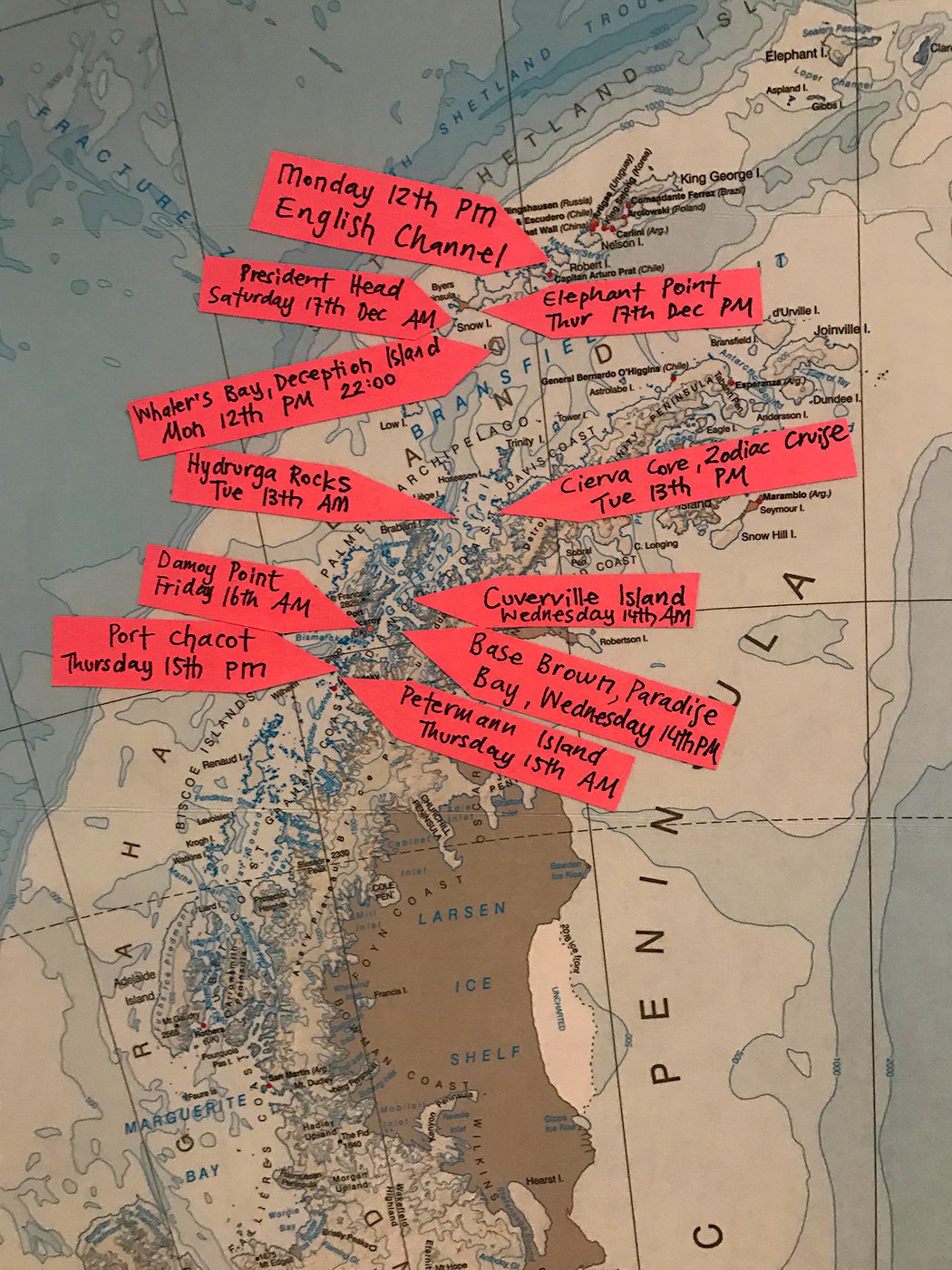I occasionally look at my life and absolutely marvel at the places I have been fortunate to visit, often more than once. I am just back from my 8th voyage to the magnificent Southern Ocean and the myriad wonders found there. Previous voyages have included the Antarctic Peninsula, Falkland Islands, South Georgia Island, the Weddell Sea, including Snow Hill, plus New Zealand’s sub-Antarctic islands. This most recent voyage was special as it was the maiden voyage of Aurora Expeditions’ gorgeous new vessel, the Sylvia Earle. Following are a few logistical notes, quirks, and highlights from my December 8-21, 2022 Spirit of Antarctica voyage.
a return to antarctica…
December 8: Our overnight flight from the U.S. was long but easy (definitely eased by using frequent flight miles and upgrading to Business Class). Arrival in Buenos Aires at the international airport was a breeze and we are through customs and immigration quickly. Past security heading towards the greeter area and airport exit you pass through a hall with several transportation kiosks. We stopped here and booked an airport transfer direct to our city-center hotel (from the TiendaLeon booth). The desk agents speak English and you can pay for the transfer with a credit card (taxis otherwise want payment in pesos). Total cost was just shy of $30. We met our driver at the booth and as we exited the secure part of the airport he was right there to help with our luggage and escort us outside to his waiting (spotlessly clean) car. The drive into central Buenos Aires takes roughly 45 minutes.
Aurora Expeditions had recommended a couple of central hotels and as we wanted to be in the Recoleta neighborhood we chose the Intersur Recoleta. For what we wanted to do, which was just relax and stroll around a bit, the location couldn’t have been better. While we couldn’t check in yet at 10am the hotel stored our luggage for us while we went for a walk. This part of the city is remarkably green with pocket parks and tree-lined streets. Just outside we found several sidewalk cafes - perfect for a café con leche and medialunas (the traditional morning coffee and crescent-shaped rolls everyone eats here). A bank and ATM were steps away so we withdrew maybe $120 worth of pesos for any times when credit cards might not be an option. Refreshed we grabbed a cab to go get the required Covid tests we would need to board the ship in a couple of days. That evening it was a two block walk to the nearby plaza and numerous wonderful sidewalk cafes. Who doesn’t like dinner under the twinkling lights, where you’re served a complimentary Aperol spritz and warm bread as you sit down?! Buenos Aires is also known for ice cream, so a stop for dessert was in order as well.
December 9: This morning it is a short drive to the domestic airport for our non-stop flight to Ushuaia (licensed taxis in Buenos Aires all have meters, but make airport runs at flat fares: 6,000 pesos to the international airport or 1,500 pesos to the domestic airport). Aerolineas Argentina is the largest carrier in the country and their domestic check-in counters are an absolute zoo. There is one enormous line for destinations south of Buenos Aires, and another for destinations north of BA. There are seemingly hundreds of people in the lines and while they have many ticket agents it is a slow line. This is a local holiday weekend so the lines were worse than usual, but I would always suggest arriving at least 2 hours prior to flight time.
From our arrival in Ushuaia we were in the more-than-capable hands of Aurora Expeditions and their ground agents. We were transferred directly to the included group hotel for this evening: Hotel Las Hayas. This evening Aurora had participants complete health attestations, and confirmed Covid test results (or arrange tests the following morning for anyone who had not tested the day prior). A hotel shuttle took us down the mountain for some free time exploring Ushuaia. The town was remarkably quiet with all locals glued to their TV’s as Argentina was battling the Netherlands in a World Cup match (in the final minute of play the Netherlands tied the score sending the match into overtime). Eventually victorious the Argentinians took to the streets in impromptu and noisy celebrations. We were happy to discover a favorite empanada shop, remembered from years past, was still in business; with more than a dozen flavors of fillings we gorged on empanadas accompanied by Argentinian beer. We opted for a taxi back to the hotel rather waiting for the next hotel shuttle.
December 10: By this morning excitement is in the air - we board the ship this afternoon! Ultra-organized, Aurora Expeditions staff collected our checked luggage this morning for transfer to the ship. Early afternoon we are off on an included quickie tour of Ushuaia, culminating with a transfer onto the tourist pier and embarkation at 4pm!
ABOUT THE SHIP
Between various expeditions around the world I’ve traveled aboard a range of small vessels, from converted small Russian research ships, to a huge Russian ice breaker, to posh vessels like the World Discoverer and RCGS Resolute. The Sylvia Earle is the grandest of the lot that I have experienced though. Typically carrying 132 passengers, we will be just 115 this voyage.
Our cabin is a Deck 6, Category B, balcony stateroom - far posher than we would usually opt for! In addition to a king bed the cabin has a sofa, coffee table, desk and chair, two night tables, mini-fridge, and endless amounts of storage. And a wall of glass opening onto our balcony! A large flatscreen TV displays the day’s schedule (in addition to other entertainment options). The bathroom is spacious, including a large shower.
Awaiting us on the bed we found our Aurora Expeditions parkas and water bottles, ours to keep after the voyage.
After taking all this in we head out to explore the ship.
Deck 9 is an open top deck observation area with views port and starboard.
Deck 8 features the forward-facing observation lounge with 180 degree windows plus access to the bow observation deck, a bar, and top-deck restaurant.
Deck 7 includes the bridge and observation deck, several passenger staterooms, the gym and sauna/wellness center, plus on the outside stern deck there are 2 jacuzzis and the pool.
Deck 6 is again passenger cabins, plus the atrium library, which is open to the citizen science center below. The open stern deck is a good observation area to watch for following sea birds.
Deck 5 includes the reception desk, bar, lecture theater/lounge, restaurant, shop, and atrium citizen science center.
Deck 4 is mostly passenger cabins, plus the expedition desk and access to the mudroom for shore landings
Deck 3 includes a couple of passenger cabins, the medical clinic, and the mudroom
Decks 3 - 8 are connected by stairs as well as an elevator (the elevator doesn’t work in rough seas we would later discover).
As a maiden voyage everything is brand spanking new, including plush carpeting and deep upholstered seating. Gorgeous photo art is displayed throughout the ship, with books in the guest cabins providing details on the art.
The main restaurant dining room on Deck 5 has picture windows port and starboard, with open seating and tables accommodating from 2 to 8 diners. The service is of an unexpected level with table cloths, cloth napkins, and more silverware than most of us know what to do with. I believe breakfast and lunch were supposed to be buffets, but accidentally the chafing dishes were not loaded on the ship prior to departure, so all meals throughout our voyage were menu service. We always had options of starters, main dishes, sides, and desserts. This made it easy to eat as much as you might want, but also not get more food than you might want. The menu choices changed daily, although there were also some items available every day. At dinner wine and sodas were also included. It was a challenge to not try it all since everything was so good!
The Deck 8 restaurant is smaller and requires reservations, but is included. The menu here features more upscale options, including, for example, filet mignon with your choice of sauces.
While I very much enjoyed all this comfort, it’s not why I come on a voyage like this. I’m here to get off the ship; to see and experience the areas we are traveling through. Here again the ship did not disappoint. The mud room is a welcome addition to expedition ship design, giving passengers a place to leave their foul weather gear: boots, rain/sailing pants, and jackets to dry (every cabin has an assigned open locker to store gear). Best of all, the mudroom on deck 3 provided a nearly level access portal to get into the zodiacs to go ashore. Other ships typically all have a gangway/stairway hanging from the exterior side of the ship that you descend to board the zodiacs. Instead the Sylvia Earle stairway is indoors, from deck 4 down to deck 3. The ship also has the ability to “lean” into the zodiac boarding side (which could be port or starboard depending on conditions): the ship can tilt up to 4 degrees towards the zodiacs to provide a more level and easy access (on the ship you cannot even tell this is happening). Hands down the Silvia Earle (and her sister ship, the Greg Mortimer) have the easiest zodiac boarding operations I have experienced.
Another unique feature of Aurora Expeditions is that their passenger parkas have a clear pocket in the jacket cuff, which contains your personalized ID bar code. This code is scanned as you disembark, and again when you return. As the code is scanned a photo of you pops up on the staff computer screen as a further confirmation. No way to get left behind on a landing with Aurora!
Many expedition ships tend to have smaller cramped feeling spaces: if a ship carries 100 passengers, there might be 100 seats in the lecture lounge. Instead the Sylvia Earle could probably accommodate at least 160 guests in the lecture space, even though her planned average cap is 132. Same with the Deck 5 dining room, where there were always empty tables or open seats.
The Sylvia Earle on her maiden voyage
The ship gives the impression of being very well designed. There were numerous places to relax comfortably, often with a beautiful view out the windows. You could easily be as social, or as quiet, as you might like. And there was never any danger of going hungry between early-riser pastries, breakfast, lunch, afternoon tea, a 24-hour coffee/cracker/cookie station, and dinner. After many of our morning excursions we were greeted back on the ship with hot chocolate or hot broth to warm us up.
Weddell seal hauled out on an iceberg
Gentoo nests a bit too close for comfort!
geologic features in the South Shetlands
THE ITINERARY/DESTINATIONS
Any sailing from South American to the Peninsula starts with the Drake Passage: a distance of roughly 600 miles of open water separating the southern tip of South America - Cape Horn - from the South Shetland Islands (roughly 100 miles north of the Peninsula). These turbulent waters are where the South Atlantic meets the South Pacific, where you cross from the “warmer” waters to the north into the Antarctica Circumpolar Current. The Drake is occasionally the “Drake Lake” with reasonably calm waters, but just as often it is the “Drake Shake” with raging seas and howling winds. I’ve experienced just about anything I thought the Drake could throw at ships, until this voyage south. This time it was like we were sailing on a mirror pond with flat seas and no wind. The entire expedition team was awed by this never-experienced flat stretch of ocean. What is typically planned as a 2-day crossing was accomplished in a day and a half. The only downside was that without the usual winds very few sea birds were up or flying with us.
English Channel: South Shetland Islands
Arriving in the South Shetlands early we enjoyed some spectacular scenery as we leisurely sailed the breathtaking scenery of the English Channel. The “White Continent” was living, beautifully, up to that name. We even had time for an unplanned ship’s cruise after dinner into the center of Deception Island’s caldera to Whaler’s Bay. From here we continued our way south through the Bransfield Strait.
chinstrap penguins calling
Cierva Cove views
Zodiac cruising among the icebergs in Cierva Cove.
Our first Gentoo penguins, swimming around the Zodiacs in Cierva Cove
Our first landing was at Hydrurga Rocks, and here we discovered just how much snow was still on the ground this year - far more than typical! The local chinstrap penguin colony had just begun their breeding season, with most on newly laid eggs. There was lots of small stone stealing action to be seen as everyone tried to fortify their nests as part of their pair bonding. Competition for nesting sites was fierce due to the late snow on the ground.
Over the next 5 days we would sail the western side of the Antarctica Peninsula, from Hydruga Rocks to Cierva Cove, Cuverville Island to Almarante Brown/Paradise Bay, Lemaire Channel to Petermann Island and Port Charcot, Damoy Point on Wiencke Island and sailing through Wilhemina Bay, and lastly President Point and Elephant Point back in the South Shetland Islands.
It is sometimes hard to decide if the wildlife or the scenery is the star of the show here. Both are worthy of accolades. Early season in Antarctica is spectacular with pristine snow fields backed by soaring mountains, blue glaciers, and drifting icebergs. At the risk of overdoing the superlatives, it is truly breathtaking.
The wildlife viewing is no slouch either! The penguin rookeries get busy the moment there is any bare ground to nest on. With winter not yet over these colonies will most likely see more snow (one of the reasons the penguins build nest bowls with small stones is so that meltwater will drain and their eggs will not sit in water). As the seasonal snow melts the colonies can become very muddy until most of the snow has melted and the ground dries out a bit. This early nesting time is wondrous with so much activity, with penguins reinforcing their pair bonds by bringing rocks for the nests, plus ecstatic display calls echoing throughout the colonies. Even with the first eggs laid the predatory skuas are there to try and steal any eggs where the penguins might momentarily let their guard down.
The shoreline frequently has groups of Southern elephant seals, while icebergs might have resting leopard seals, Weddell seal or fur seals. Whales are active as well… there is so much to see everywhere you look!
weaner (year old) elephant seal: stretching or posing?
stolen or found, small rocks are an important part of nesting. Adélie penguins.
lots of dancing and calling and snuggling, presenting of rocks for the nest, chasing rivals away, rekindling the mood, and finally an act of balance to mate…
The ship offered several specialized ways to experience Antarctica on our voyage: snow shoeing, kayaking, and snorkeling (!). Each special activity had a team of three expedition guides with them on all outings. With lots of participants on these special programs that meant there were fewer of us doing the standard landings so the walks never felt crowded (besides, we had a lot of freedom to spread out and follow the various expedition team members on landings.)
snorkeling in Antarctica!!
kayaking
snowshoeing
Before we knew it it was time to head back into the Drake Passage. This time there was some wind, and some swells of 3 to 4 meters, but nothing major and certainly nothing the Sylvia Earle couldn’t handle with ease. And, because there was some wind this time we were accompanied on our journey by all the frequent fliers: black browed albatross, sooty albatross, wandering albatross, giant petrels, cape petrels/pintados, Wilson’s storm petrels, and more! Once again we made exceptional time, reaching Cape Horn midday. Chile gave permission for the ship to sail close to the horn so as we approached the continent we turned to the west into the southern Pacific. The ship soon pulled a U-turn and headed back to the South Atlantic, so we really were “rounding the horn”!
THE JOURNEY HOME
Back in Ushuaia Aurora Expeditions was again on top of their organizational game. We sailed into the Beagle Channel the morning of December 20 and the ship was docked by 7am. Aurora had arranged several busses to get everyone where they needed to be at the appropriate times. The first bus went directly to the airport for the early flights out. The second bus took travelers to their hotels if they were staying in Ushuaia overnight. The next couple of busses took participants into town, with set times when to return to your bus for a transfer to the airport. Checked luggage was stored in the bus hold, and we could opt to keep our carry-on bags with us, or leave them inside the locked bus while we explored.
Based on our 1pm flight we had to be back at our bus at 11am for our transfer. The Ushuaia airport is small and easily navigated. Aerolineas Argentina is a stickler for luggage weight allowances, and eagerly charges modest overweight fees (we were below the limits). The only other challenge of the airport is a single tiny snack bar after security, which tends to have long lines and mediocre snacks.
Our flight back to Buenos Aires took an unexpected turn. We were scheduled to have a stop in Cordoba en route to BA, where we would remain on the plane. As it turned out we had a very hard landing in Cordoba and everyone needed to deplane. Details were sparse but word started to filter through that our plane’s landing gear was damaged and the plane was out of service until it could be inspected. Suddenly everyone is scrambling for alternate flights to Buenos Aires that evening. Rather than landing at 7pm our new flight landed a bit after 9pm. Not unexpectedly no one’s luggage made the transfer. Aerolineas agents took all our lost luggage reports and promised to get back to us. Several passengers in the group had electronic luggage tags and could see where their bags were - none were in the BA domestic airport, but a couple were at the international airport, and most were still in Cordoba. Sigh. The airline agents said they would arrive later tonight and would be sent to our hotels. A few people went to their various hotels, while maybe a dozen of us remained in the airport (the electronic bag tags now showed the luggage between Cordoba and BA, so presumably on a plane headed our way. Our bags arrived on a flight landing just before midnight. Everyone was exhausted, but we had our bags!
It was a crazy day in Argentina, and especially in Buenos Aires. A couple of days prior Argentina won the 2022 World Cup, and early this morning the national team returned to Argentina. It was estimated that at least 4.5 million people had descended on central BA for a celebration. The scene was so overwhelming that the team had be be evacuated back out of the city center by helicopter that evening, not long before our flight landed! Had our pilot to Cordoba maybe have been celebrating a bit himself? That was the rumor we were hearing.
Anyway, a bit after midnight, in a city gone crazy, we’re all looking for taxis. So are hundreds of other folks. Seems the taxi drivers are all celebrating, or stuck in traffic, so the queue looks like it might take hours. Back inside the terminal I again book a car to our hotel. What would have been 1,500 pesos in a taxi (just over $8) was instead 5,000 pesos ($28) for a car, but there was no waiting at all!
Our hotel this time is in the trendy Puerto Modero district, between the Rio Plato and the canals: Hotel Madero. My goal this visit was to explore the nearby Costanera Sur Ecological Reserve. This 350 hectar (over 850 acres) nature reserve was a delight to walk through our last morning in Buenos Aires! The reserve is open (no charge) Tuesday through Sunday, 8am - 7pm (last entrance at 6p). If I’m back in Buenos Aires one day I’ll be sure to return to Costanera Sur.
This afternoon our hotel called a taxi for us, for an easy drive back to the international airport. Exit formalities took a bit longer than expected, but were no problem… we still had plenty of time to relax in the American Airlines lounge before boarding our flight home. We departed Buenos Aires on the longest day of the year, and landed back in the U.S. on the shortest day of the year!
It’s been another great adventure!
Costanera Sur features several shallow lakes and ponds (the reserve is a reclaimed wetland adjacent to the great Rio Plata River) interwoven with trails dotted with viewpoints. The reserve is home to a wonderful mix of shore and forest birds, with songs surrounding you as you stroll,
COVID ADAPTATIONS
At least for the 2022/23 season Covid remains a concern for us all. All passengers (and crew) with Aurora Expeditions are required to be vaccinated and boosted. In addition all passengers currently are required to be tested prior to boarding the ship, plus the ship will administer Covid antigen tests twice during the sailing, on days 3 and 7.
In Ushuaia two travelers tested positive and were not allowed to board. Four days later, on board, another couple tested positive. They were then quarantined in their cabin for the next 5 days. Aurora Expeditions currently extends credit to any passengers who test positive anytime, starting 2 weeks prior to departure, so they may return in a subsequent season.
All other travelers tested negative at all tests, which was a relief for everyone.
While normally the ship’s bridge is open to passengers, it will be closed this season as a precaution. Similarly, this season the expedition team and bridge crew will not be mingling with passengers at meals.
Mask wearing was not a requirement on the ship although often the restaurant and housekeeping staffs wore masks, as did a few of the expedition team members and passengers.
Thank you to Aurora Expeditions for the opportunity to revisit Antarctica - one of my favorite places anywhere - and experience the remarkable new Sylvia Earle expedition ship!
travel journal text and photography by Mark Grantham
